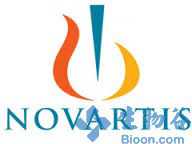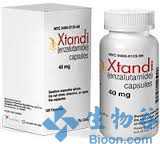诺华骨髓瘤药物LBH589 III期试验达主要目标
2013-12-10 tomato 生物谷
诺华(Novartis)12月6日公布了有关实验性化合物LBH589(panobinostat)的一项III期试验(PANORAMA-1)的数据,该项研究在复发或复发难治性多发性骨髓瘤患者中开展,研究数据表明,与安慰剂+硼替佐米(bortezomib)+地塞米松(dexamethasone)组合疗法相比,LBH589+硼替佐米+地塞米松组合疗法显著延长了患者的无进展生存期(PFS),达到了研究
诺华(Novartis)12月6日公布了有关实验性化合物LBH589(panobinostat)的一项III期试验(PANORAMA-1)的数据,该项研究在复发或复发难治性多发性骨髓瘤患者中开展,研究数据表明,与安慰剂+硼替佐米(bortezomib)+地塞米松(dexamethasone)组合疗法相比,LBH589+硼替佐米+地塞米松组合疗法显著延长了患者的无进展生存期(PFS),达到了研究的主要终点。
PANORAMA-1研究的完整数据,将进行进一步的评估,并将提交至即将召开的医疗会议,并与世界各地的监管机构讨论。
多发性骨髓瘤起因于骨髓中的浆细胞,属血癌的一种,主要影响老年人,该病的5年生存率约为44%。
LBH589在临床试验中显示出的显著临床利益,使得该药有望成为首个新一类抗癌药物,用于多发性骨髓瘤患者的治疗。
PANORAMA-1是一项随机、双盲、安慰剂对照、多中心、全球性注册III期研究,在复发或复发难治性多发性骨髓瘤患者中开展,将LBH589+硼替佐米(bortezomib)+地塞米松(dexamethasone)组合疗法,和安慰剂+硼替佐米+地塞米松组合疗法进行了对比。该项研究的主要终点是无进展生存期(PFS)、次要终点为总生存期(OS),其他次要终点包括:总反应率,反应持续时间和安全性。
关于LBH589:
LBH589是一种强效的口服I、II和IV类组蛋白(和非组蛋白)脱乙酰酶(HDACs/DACs)泛抑制剂,通过阻断一组关键酶发挥作用,最终导致细胞应激和死亡。目前,该药的安全性和疗效属性尚未确定。
英文原文:Novartis investigational compound LBH589 significantly extended time without disease progression in Phase III multiple myeloma study
-Study of LBH589 plus bortezomib and dexamethasone met primary endpoint of extending PFS compared to bortezomib plus dexamethasone and placebo
-LBH589 has potential to be the first in its class of anticancer agents available to patients with multiple myeloma
-Data will be presented at an upcoming medical congress and discussed with regulatory authorities worldwide
Basel, December 6, 2013 - Novartis today announced that results of a Phase III trial of the investigational compound LBH589 (panobinostat) in combination with bortezomib and dexamethasone, met the primary endpoint of significantly extending progression-free survival (PFS) in patients with relapsed or relapsed and refractory multiple myeloma when compared to bortezomib plus dexamethasone alone.
Full results from the PANORAMA-1 (PANobinostat ORAl in Multiple MyelomA) trial, continue to be evaluated and will be presented at an upcoming medical congress and discussed with regulatory authorities worldwide.
Multiple myeloma affects approximately 1 to 5 in every 100,000 people worldwide each year. The five year survival-rate for patients with the disease is about 44%[1].
LBH589 showed significant clinical benefit bringing it a step closer to becoming the first in its class of anticancer agents to be available to patients with multiple myeloma. As a pan-deacetylase (pan-DAC) inhibitor, LBH589 works by blocking a key cancer cell enzyme which ultimately leads to cellular stress and death of these cells[2].
"Results from this study show improved outcomes for these multiple myeloma patients who otherwise have few options to treat this incurable disease," said Alessandro Riva, Global Head, Oncology Development and Medical Affairs, Novartis Oncology. "Given its mechanism of action, LBH589 has the potential to be an important treatment option for multiple myeloma."
Prior data demonstrated that oral LBH589, when combined with bortezomib and dexamethasone, recaptures responses in heavily pretreated and bortezomib-refractory multiple myeloma patients, thereby providing these patients with a potential new option after failing prior standard treatments[3]. The compound's possible benefits and risks are also being explored in additional hematologic malignancies through ongoing clinical trials.
Study Design
The PANobinostat ORAl in Multiple MyelomA (PANORAMA) clinical trial program is evaluating LBH589 in patients with relapsed or relapsed and refractory multiple myeloma.
The PANORAMA-1 clinical trial is a Phase III randomized, double blind, placebo controlled, multicenter global registration trial to evaluate LBH589 in combination with bortezomib and dexamethasone against bortezomib and dexamethasone alone in patients with relapsed or relapsed and refractory multiple myeloma. The primary endpoint of the trial was progression-free survival (PFS) and the key secondary endpoint is overall survival (OS). Other secondary endpoints include overall response rate, duration of response and safety.
About LBH589
LBH589 is a potent oral pan-inhibitor of class I, II, and IV histone (and non-histone) deacetylase enzymes (HDACs/DACs). It works by blocking a set of key enzymes which ultimately leads to cellular stress and death of these cells[2].
Because LBH589 is an investigational compound, the safety and efficacy profile has not yet been established. Access to this investigational compound is available only through carefully controlled and monitored clinical trials. These trials are designed to understand better the potential benefits and risks of the compound. Because of the uncertainty of clinical trials, there is no guarantee that LBH589 will ever be commercially available anywhere in the world.
About Multiple Myeloma
Multiple myeloma is a cancer of plasma cells, a type of white blood cell in the bone marrow that produces antibodies and helps fight infection. When the plasma cells become cancerous and multiply, they are known as myeloma cells. The buildup of myeloma cells causes an abnormal plasma cell level in the blood, overwhelming the production of healthy cells[4].
Multiple myeloma typically occurs in individuals 50 years of age and older, with few cases in individuals younger than 40. Common symptoms include a high level of calcium in the blood, decreased red blood cells, kidney failure, bone damage and pain and fatigue, but may vary from person to person. There are currently no curative therapies available for multiple myeloma[4]. Therefore, there is a high unmet medical need for therapies addressing new relevant molecular targets.
本网站所有内容来源注明为“梅斯医学”或“MedSci原创”的文字、图片和音视频资料,版权均属于梅斯医学所有。非经授权,任何媒体、网站或个人不得转载,授权转载时须注明来源为“梅斯医学”。其它来源的文章系转载文章,或“梅斯号”自媒体发布的文章,仅系出于传递更多信息之目的,本站仅负责审核内容合规,其内容不代表本站立场,本站不负责内容的准确性和版权。如果存在侵权、或不希望被转载的媒体或个人可与我们联系,我们将立即进行删除处理。
在此留言














#II期试验#
54
#III#
59
#诺华#
77
#III期#
0